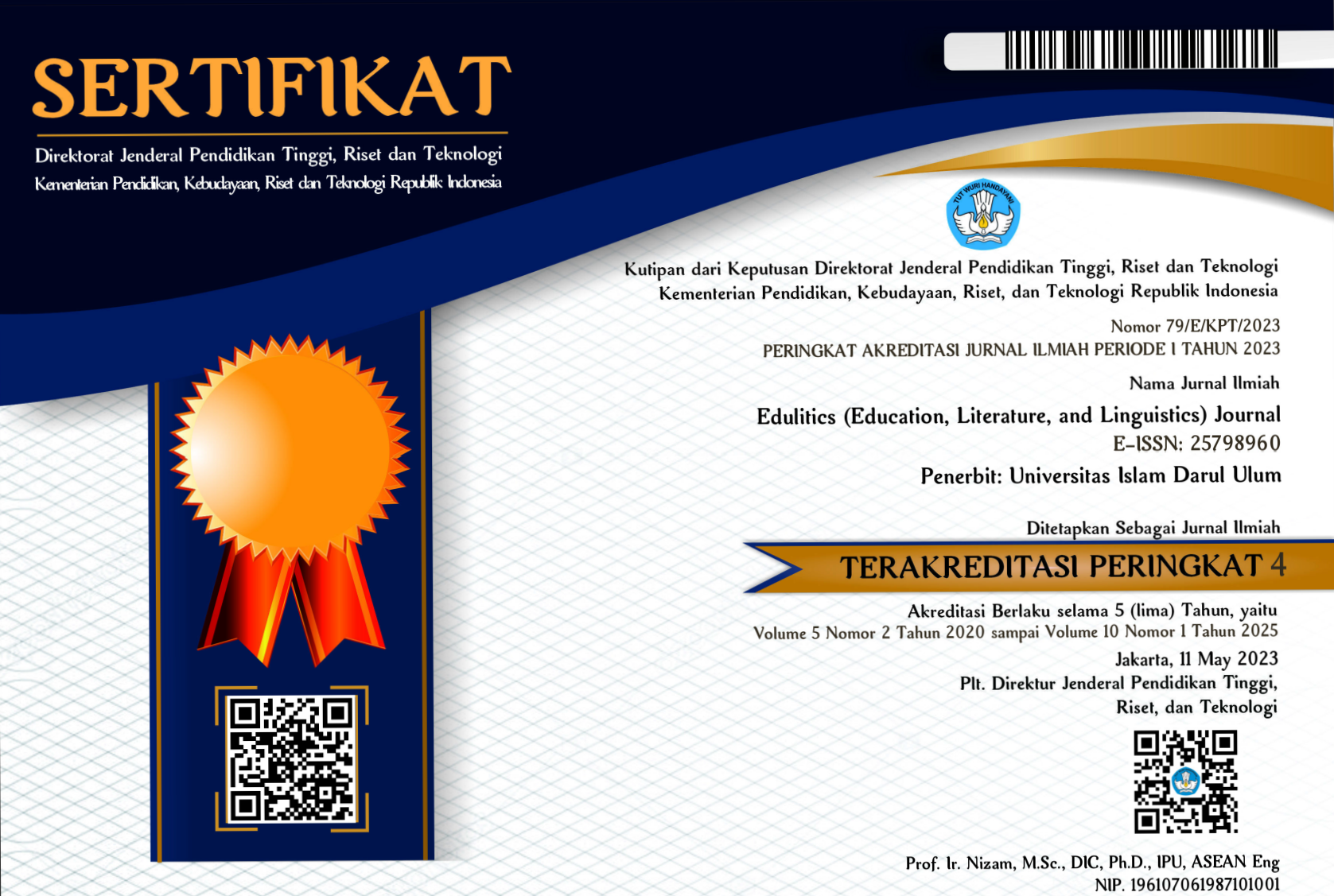Code Mixing of the Students’ Utterances in the Matholiul Anwar Islamic Boarding School Simo Sungelebak Karanggeneng Lamongan
Abstract
Code mixing is the infiltration of sentence elements from one language into another in the form of words, phrases, repetitions of words or idioms. Islamic boarding school is a place that uses several languages, both in daily communication and in the teaching and learning process. The example from the Matholi'ul Anwar Simo Sungelebak Islamic boarding school, Karanggeneng Lamongan, uses two or more languages in communicating, both daily and in the teaching and learning process. Data collection methods and techniques used in this study are the listening method and the interview method. The data taken for this research material is the utterance of the students of the Matholi'ul Anwar Simo Islamic boarding school with the recording technique. This study obtained results, namely (1) the types of language used by the students at the Matholi'ul Anwar Simo Islamic boarding school are Indonesian, Javanese, English, and Arabic. (2) the form of code mixing used by the students in Islamic boarding schools is the insertion of elements in the form of words: (a) nouns (nouns), (b) verbs (verbs), (c) adjectives (adjectives), ( d) pronouns (pronominals), and (e) question words. the insertion of elements in the form of phrases, the insertion of elements in the form of clauses, the insertion of elements in the form of repetition of words, and the insertion of elements in the form of expressions or idioms. 3) the factors that cause code mixing of the students of the Matholi'ul Anwar Simo Sungelebak Karanggeneng Lamongan Islamic boarding school include: (a) the presence of other speakers, (b) respect for the interlocutor, and (c) the environment.
Downloads
Authors retain copyright and grant the journal the right of first publication with the work simultaneously licensed under a Creative Commons Attribution-ShareAlike 4.0 International License that allows others to share the work with an acknowledgment of the work's authorship and initial publication in this journal.
Authors are able to enter into separate, additional contractual arrangements for the non-exclusive distribution of the journal's published version of the work (e.g., post it to an institutional repository or publish it in a book), with an acknowledgment of its initial publication in this journal.
Authors are permitted and encouraged to post their work online (e.g., in institutional repositories or on their website) before and during the submission process, as it can lead to productive exchanges and earlier and greater citation of published work.






_(1).png)


